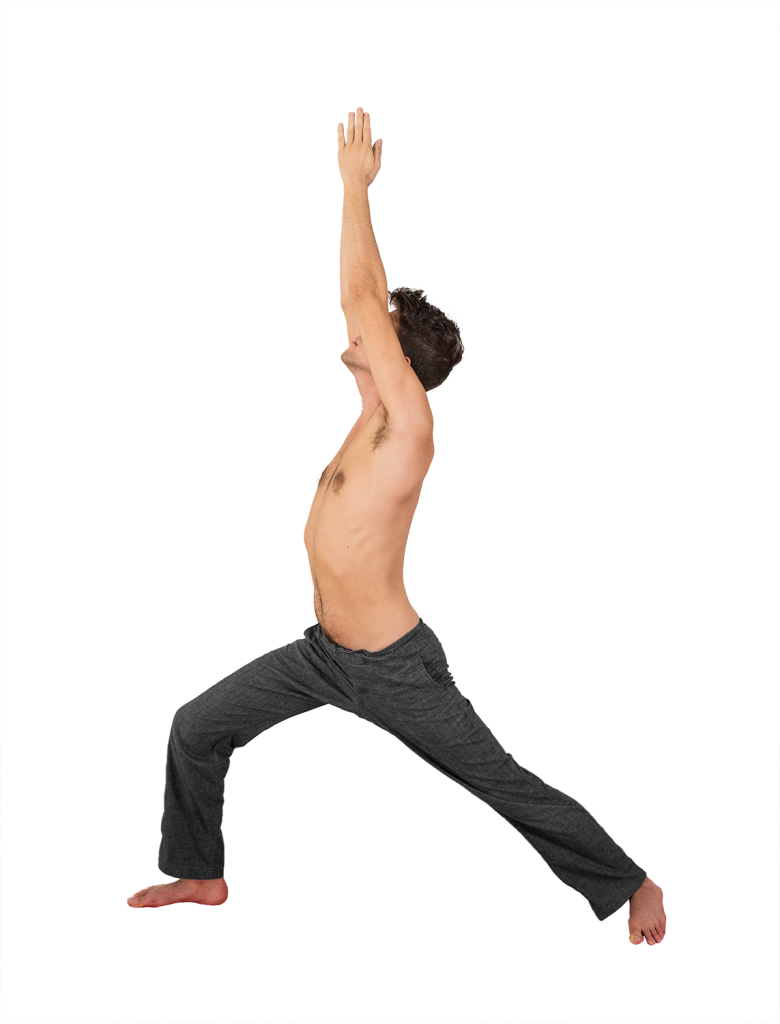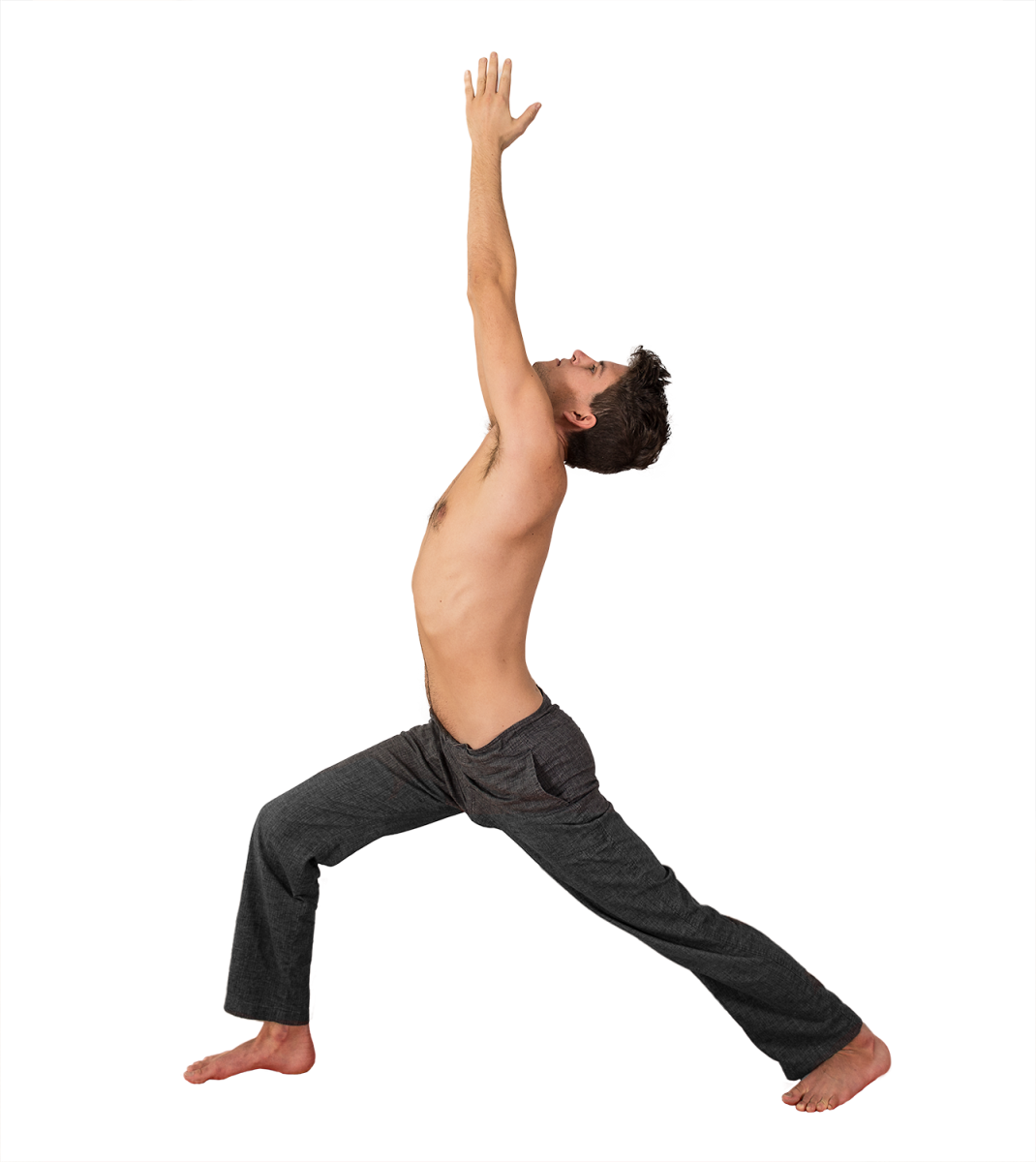Virabhadrasana A
- Virabhadra – Distinguished Hero
- Asana – Pose
Virabhadrasana A is the fourth pose of the primary series.
Focus On…
The front knee is bent to approximately 70-90 degrees, such that the tibia is perpendicular to the ground in every dimension. The back leg is fully straightened. The upper body is not only vertical, but lifting. Rather than leaning back at the level of the chest or shoulders to create the illusion of verticality, draw upwards from the deep low belly and the waistline.
Keep the pelvis relatively neutral. Avoid excessive anterior or posterior tilting. Neutral does not mean passive or relaxed, however. A strong anterior tilt is typical while learning the pose, due to the position of the back leg and limited quadricep length. This means you’ll need to make the action of posterior rotation until the pelvis comes to an active neutral, which will be quite effortful.
In order for the pelvis and legs to form a stable and powerful foundation, both thighs must be rotated internally. This can seem paradoxical on the back leg, as an interior rotation can put too much weight on the big toe or peel the sole of the foot off the ground. To address this, be sure to press the center of the heel and the outer edge (pinky edge) of the back foot firmly into the mat while you rotate the thigh internally.
Press the palms together firmly, and take the head behind the line of the arms. Avoid lacing the fingers together, or letting the shoulders grip around the neck. Reach upwards as much as you can, using the motion of the arms to cultivate length of the torso. Pressing the hands together will allow you to access the side rib musculature (namely, the latissimus dorsi & serratus anterior muscles. This is the area below the armpits). Creating strength in the side ribs is important in a variety of postures, essential to arm balances, and necessary in establishing healthy alignment in the shoulder girdle and neck.
Keep the musculature of the neck supportive by reaching the nose towards the ceiling.
Vinyasa of the pose
Virabhadrasana A follows from the last vinyasa of Utkatasana. From Sat, keep exhaling and step the right foot between your hands.
Inhale and join the palms overhead. Gaze up to the thumbs. This is the state of Virabhadrasana A – Spend five breaths here.
Without lowering the hands or gaze, exhale, pivot 180 degrees to come into the left side of the pose. Spend five breaths here.
Exhale, transition to Virabhadrasana B.
Alternatives & Solutions
If you have a neck injury, or limited mobility in your shoulders, spread the hands shoulder width apart. Keep the neck upright rather than tilting the head back to gaze upwards. Over time, however, work towards the proper head position. It is important to return the neck to a fully functional range of motion.
If the heel of the back foot doesn’t reach the ground, or there is pain in the achilles tendon or knee, place a block beneath the heel while maintaining the 45 degree angle. Over time, reduce the height of the support.
Common Mistakes
Avoid letting the knee wander from its proper place directly over the ankle. If it has gone from side to side, work the rotation of the thigh until it comes back into place. If it has strayed over the toes or beyond, increase the length of your stance. If it has not reached the ankle, bend the knee more. The tibia ought be perpendicular to the floor.
The pelvis will typically rotate towards the open side — to the left with the left leg back, right with the right leg back. The result is a twisted conglomeration of Virabhadrasana variations A and B. Use the hands to find the hips, and wrap the the pelvis towards the front leg. Use the inner thigh muscles. If the back heel lifts from the ground, place a block beneath the heel until flexibility increases.
In the photo below, observe that the back foot is perpendicular to the front, rather than 45 degrees. This could be due to inattention or a tight Achilles Tendon/Calf musculature. As a result, the entire trunk (hips, ribs, shoulders) is distorted, twisting towards the camera. The head is also crunched between the arms, disallowing full shoulder extension. In whole, the posture is lacking in integrity and lift.

An example of ineffective alignment



